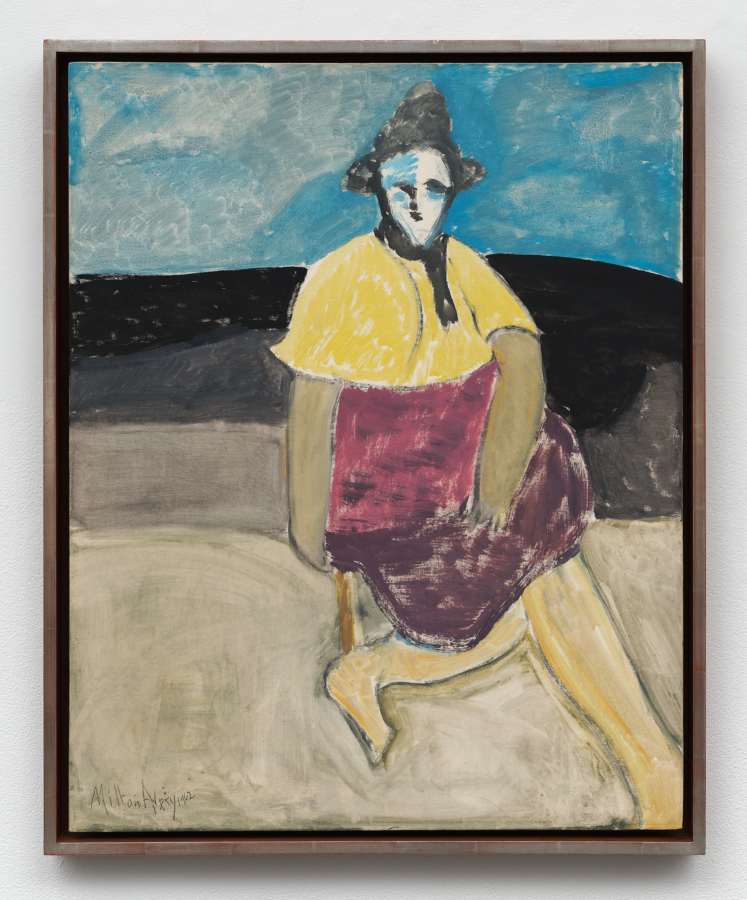December 28, 1968
Download as PDF
View on Artforum
In his second one-man show at the Bykert Gallery Robert Duran diverges from the look of his earlier sculpture to explore a more systematic yet strangely more open organization in the new pieces. In several of his older works diagonal interlocks, jutting arrow-like shapes, and closely aligned axial parts often framed or forced the space into relatively defined areas. This tight spatial channeling left few possibilities for anything but the establishment of the emphatic, often blocky, gravity-bound volumes of the sculptures’ components. This obdurateness and control have not been abandoned in Duran’s current work, but have taken on a new role in terms of a very deliberate, almost syncopated disposition of parts which is complemented by a subtly a-rhythmic pacing of the space between these forms. The expressive tone of most of his sculpture has always tended toward something compact and dense, while the shapes themselves have often aimed for a certain kind of lightning quickness (using jagged diagonals and few right angles) which was nevertheless constrained by the closeness of the forms, or the neutrality of their colors.
The pieces exhibited this year are made of compressed wood (novaply). They are each sprayed a different color which generally obscures the character of the material and in certain cases even weakens its sculptural mass or identity. But at the same time the new and more daring use of color has prompted Duran to work through the problems it poses in relation to a reductive vocabulary of forms in a complex format. Low slabs, squared posts, and uneven-sided right angles are arranged concentrically on a square “plan” on the floor. While the organization of these pieces maintains that almost hermetic compactness and squat density which marked his early sculpture, holding together with a subdued though taut energy (like the lines of force in a magnetic field), space can move through and between the slender solid forms in an irregular labyrinthine manner. In the most complex multi-part piece, sprayed brick red misting into grey along corners and edges, an outer fence of slabs and posts surrounds an inner rectangle composed of two sets of narrow and wider slabs. Viewed from different angles, or from above—most of the works are below eye level in height—one integer always blocks any clear passage of space through the invisible plan on which the work is set. This makes for an oddly “ornery” presence, as each expectation of unbroken spatial and material continuity or steady rhythm is blocked or deviated and both space and solid are skewed against each other. I felt that other pieces were more successful, however, since a broader, more open spacing, tended to work more fully in conjunction with the coloring rather than against it. In the red piece this coloring seemed too pictorial or too contradictory in relation to the rigidly fixed, almost stubborn plan.
The color on each separate piece within a whole scheme is applied differently, often toning from some deep hue near the bottom up to a lighter more aerated tint, or vice versa. Although this kind of treatment can force the color to divorce itself from the solid forms it covers, or to lift the pieces from their gravitational anchoring, the color then may relate more abstractly to the fluid circulation of space and air around the blocks, slabs, and posts. In other words, it can work positively, in complement to the tightness or grid-regularity of the structural plan.
I felt the most risky and most interesting piece was the most asymmetrically designed blue work. Three of its corners are marked off by right-angled units of various sizes (all the pieces are the same height), while the fourth corner is pegged by a single post. Inside this irregular framework sit four other variegated pieces: three different slabs and another square post, creating an off-balance, open-ended though still concentric plan. Because the plan itself is not static, the gradated coloring does not distract from the whole, and even serves to add an extra measure of interest with its apparent capacity to levitate some pieces or to ground others.
It is difficult to be definitive about work which is still tentative, even conservative, in many respects, but having watched Duran’s work––and he works slowly but deliberately––over the past few years I felt that this showing indicated a more distinctly original direction in his thinking and production.
—Emily Wasserman



